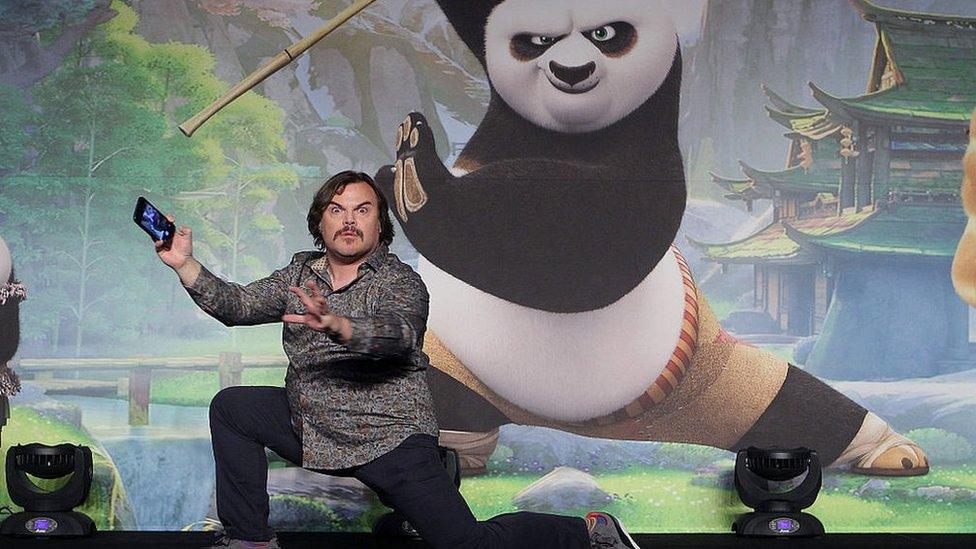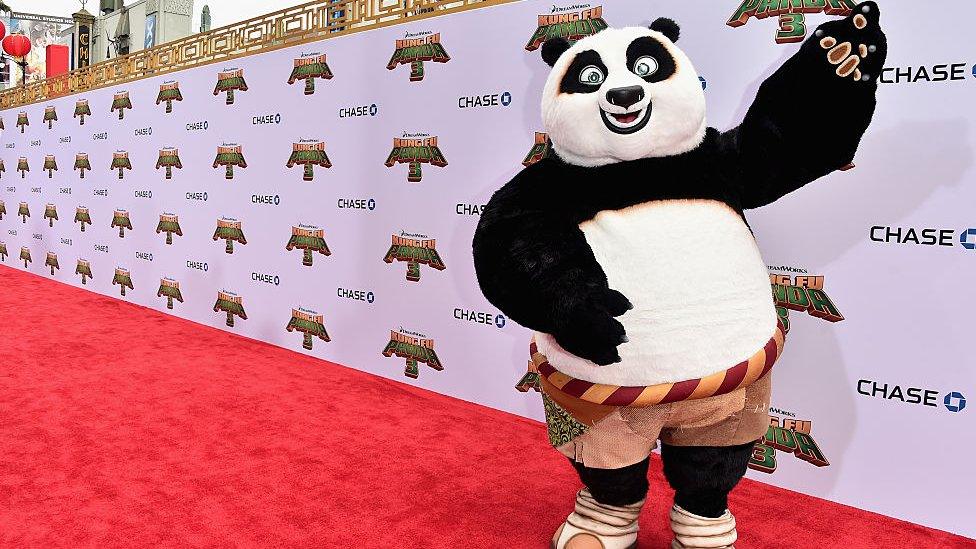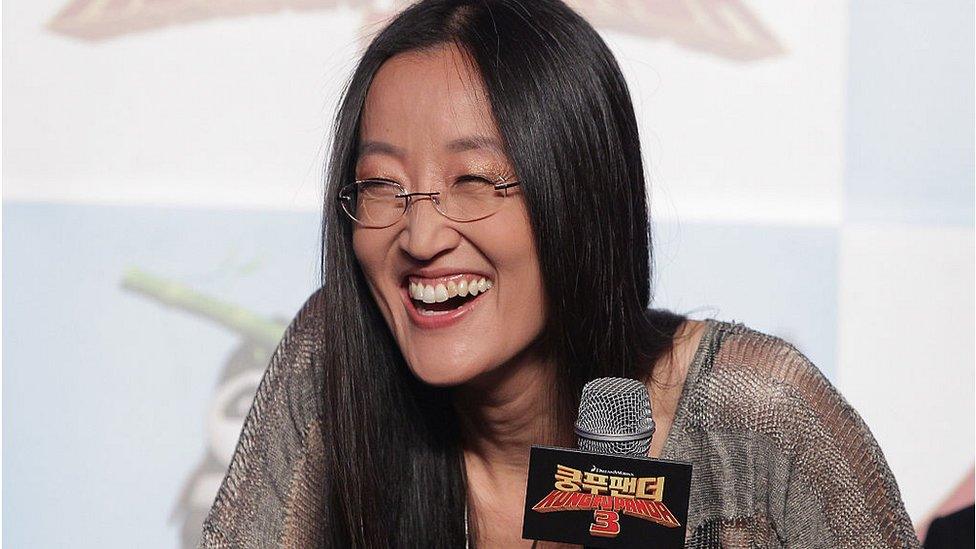Kung Fu Panda: How DreamWorks tailored its film for Chinese viewers
- Published

Jack Black is back as the fast-talking, dumpling-loving panda, Master Po, in Kung Fu 3
It may be Oscars season, but the animated children's film Kung Fu Panda 3 is arguably the most important film in Hollywood this week - even without the prospect of winning any statuettes.
The film is the first major US-China co-production for an animated movie and it was tailored specifically to appeal to the growing Chinese market - and not just because it's about a dumpling-loving, Kung Fu-fighting panda who lives in China. But also because Hollywood executives are developing a sharp sense for how to appeal to audiences in the world's fastest growing movie market.
The extra effort has paid off. The panda movie took $41m (£28m) at the US box office and $58.3m in China - which was the highest opening weekend ever for an animated movie there.
The record-breaking simultaneous opening in the US and China has set a new standard in how the world's two biggest film markets do business together.
DreamWorks Animation and Oriental DreamWorks essentially made two movies - one in English, and one in Mandarin.
Instead of the usual dubbing into a foreign language, the company painstakingly reanimated the Mandarin version so the animated panda and his pals matched the words they were speaking in both languages.
And it's also the first movie to open in both Mandarin and English in the United States and China.
Big in China
In the US, a handful of cinemas will play the Mandarin version, including three in Los Angeles near large Chinese American populations.

Kung Fu Panda 3 is the first film to open in both Mandarin and English in the US and China

And the film has been a box office hit in both countries
DreamWorks hopes the simultaneous, dual language release will mean some families go to see it twice. And the movie features all-star casts in both languages, including the voices of Jack Black and Angelina Jolie in the US and Jackie Chan and Bai Baihe in China.
The model is likely to be emulated by Hollywood's other studio bosses and producers who are increasingly trying to target the rapidly growing Chinese market.
"Everyone is trying to get into this market. Just some are doing better than others," says Stephen Hamel, who has several US-China co-productions set up with his producing partner Keanu Reeves.
Tailoring
By the end of this decade, China could surpass the United States to become the biggest movie market in the world.
And come 2030, China's film market could be twice as big as the US-market, according to Paul Dergarabedian, a Los Angeles-based box office analyst with Rentrak.
"To say China is a big deal is the understatement of the decade - in terms of the movie market," he says.

DreamWorks hopes that the third film in the franchise will top the success of the record-breaking sequel in 2011

The movie has the voices of Jack Black and Angelina Jolie in the US, and Jackie Chan and Bai Baihe in China
"The fact that movie marketing campaigns are tailored to that marketplace makes a lot of strategic sense. It's about the money at the end of the day, how to get the movie made, how to get the money.
"If the studios aren't in co-production with China they are at least considering China in their marketing plan."
'Killing it'
A landmark US-China film agreement in 2012 opened the Chinese market to a big number of Hollywood-made films - 34 instead of 20 - and allowed US distributors to take a greater share of box office revenues - 25% instead of 11-15%.
Yet Hollywood movies are restricted to when they can be shown in China, and there are also blackout periods during peak movie-going times, in order to promote Chinese films.
"But Hollywood ain't complaining. They're killing it at the box office there," says Jonathan Landreth, editor of China Film Insider.
Fast & Furious, Avengers and Star Wars have all been recent blockbuster hits in China.
Local qualifier
Kung Fu Panda 3 is unique in that it qualifies as a local production and thus evades China's blackout on Hollywood movies - which means it will be showing during the busy upcoming Lunar New Year holidays.
That true co-production status is what more Hollywood studios are hoping to attain, Landreth says.

"If you like a good story, and accessible characters - that's the audience for Kung Fu Panda," says director Jennifer Yuh
However, cute, fuzzy pandas have a universal appeal. Not all US movies targeted to China fare so well. Man of Tai Chi, produced by Stephen Hamel and directed by Keanu Reeves, tanked at the US and China box office when it opened in 2013.
Mr Hamel believes they had distribution problems but says the experience was far from a disaster.
"It was a great experience and introduced us to a lot of people and those relationships are now blooming," he says, adding that they have two co-productions in the works in China now including Unmanned, a thriller set in Hong Kong during a future world war.
There is more excitement and optimism in the Chinese film industry than in Los Angeles now, says Mr Hamel, and argues that film is the ultimate tool to bring different cultures together.
"They are dreamers still. It's like Hollywood in the 40s - so I am excited about being there and doing this and finding ways of bridging Hollywood and China," he says.
- Published28 January 2016
